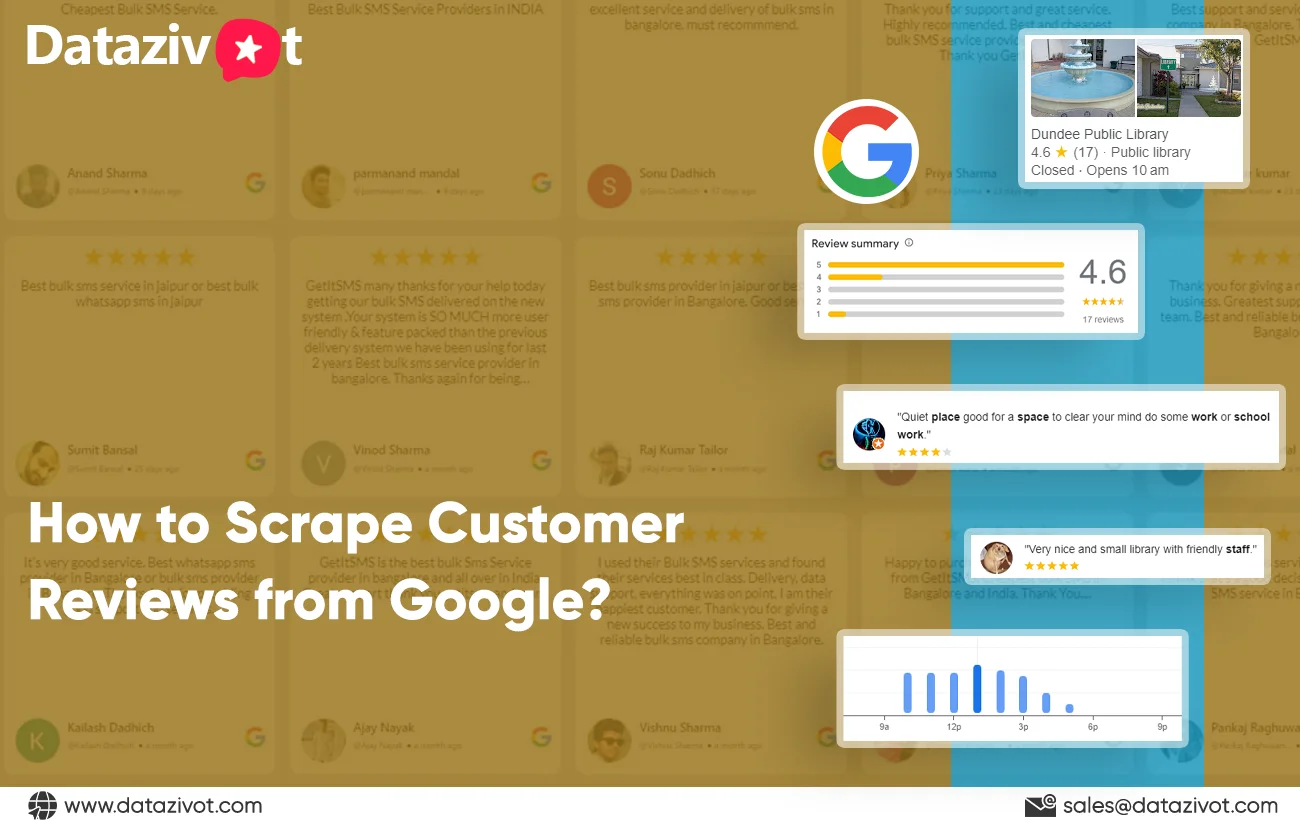
Introduction
Google customer reviews data scraping provides valuable insights into consumer sentiment, preferences, and perceptions about businesses, products, or services. As one of the largest search engines globally, Google aggregates reviews across various platforms such as Google Maps, Google My Business, and Google Play Store. These reviews encompass diverse opinions and ratings, influencing potential customers and shaping brand reputations significantly.
To scrape customer reviews from Google effectively, businesses and researchers can use web scraping techniques and tools designed for extracting structured data from web pages. This process involves navigating through Google search results or business profiles, extracting review text, ratings, dates, and other relevant metadata. By automating this Google customer reviews data scraping process, organizations can gather large volumes of reviews efficiently, enabling in-depth analysis and insights into customer feedback.
Using a Google customer reviews scraper or implementing APIs (Application Programming Interfaces) like the Google Places API can streamline the scraping process, ensuring compliance with Google's terms of service and legal considerations. This guide explores methods, best practices, and ethical considerations to extract Google customer reviews data to leverage valuable consumer feedback for strategic decision-making and business growth.
Understanding Google Customer Reviews
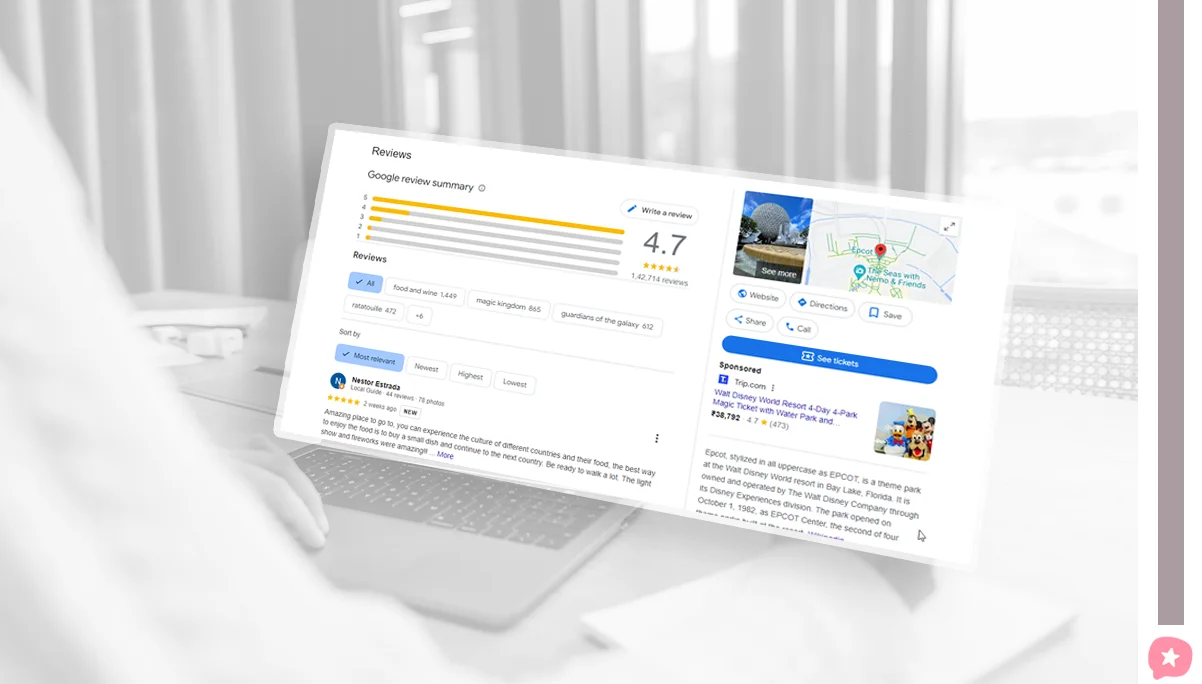
Google Customer Reviews encompass feedback and ratings provided by users across various Google platforms, including Google Maps, Google My Business, and Google Play Store. These reviews serve as a critical source of information for consumers researching businesses, products, or services. They offer insights into customer experiences, satisfaction levels, and overall perceptions, influencing potential customers' decisions.
Businesses benefit from Google Customer Reviews by gaining visibility and credibility through positive feedback and high ratings. Conversely, negative reviews provide opportunities for improvement and corrective actions to enhance customer satisfaction. The star ratings accompanying reviews quickly convey reputational signals to prospective clients, influencing their purchasing decisions.
For consumers, Google Customer Reviews offer transparency and reliability, enabling informed choices based on real-life experiences shared by others. The reviews often include detailed descriptions of service quality, product features, pricing, and customer service, helping users assess whether a business meets their expectations.
Understanding and analyzing Google Customer Reviews require businesses to actively monitor and respond to feedback, engage with customers, and use insights gained to refine marketing strategies and operational processes. This proactive approach not only enhances customer relationships but also strengthens brand reputation in the competitive digital landscape.
Why Scrape Customer Reviews from Google?
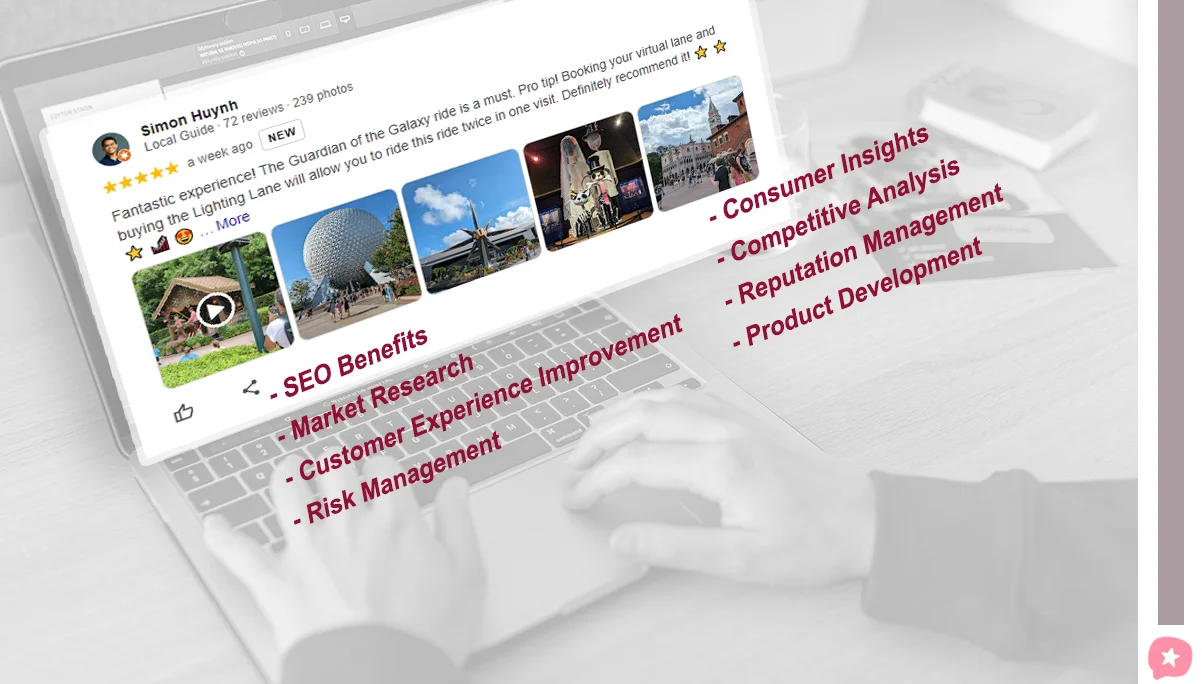
To scrape customer reviews from Google provides businesses with a wealth of valuable insights and advantages that can significantly impact their operations and strategies. Here are several compelling reasons why web scraping Google customer reviews is crucial:
Consumer Insights: Google customer reviews offer direct feedback from consumers about their experiences with products, services, or businesses. Scraping these reviews allows businesses to understand customer preferences, pain points, satisfaction levels, and overall sentiment. These insights are invaluable for improving offerings, refining marketing strategies, and enhancing customer satisfaction.
Competitive Analysis: Monitoring competitors' customer reviews on Google provides a benchmark for comparison. By scraping and analyzing competitor reviews, businesses can identify strengths, weaknesses, and areas where they can differentiate themselves in the market. This competitive intelligence helps in positioning the business more effectively and seizing opportunities.
Reputation Management: Online reputation is critical for businesses. Scraping Google reviews helps in monitoring and managing brand perception. Positive reviews can be highlighted for marketing purposes, while negative reviews can be addressed promptly to mitigate reputational risks. Responding to reviews shows proactive customer engagement and can turn dissatisfied customers into loyal advocates.
Product Development: Customer reviews often contain suggestions, feature requests, and insights into product usage. Scraping these reviews provides a direct line of feedback for product development teams. Businesses can identify trends, common complaints, or desired features that can inform future product iterations and innovations.
SEO Benefits: Google reviews contribute to local SEO (Search Engine Optimization) and overall search visibility. Scraped reviews can be used to populate testimonials on business websites, enhancing credibility and trustworthiness. Positive reviews with relevant keywords can also improve organic search rankings, driving more traffic to the business.
Market Research: Scraping Google reviews allows businesses to conduct comprehensive market research. By analyzing trends in customer feedback across different demographics, locations, or time periods, businesses can uncover market preferences, identify emerging trends, and make data-driven decisions.
Customer Experience Improvement: Understanding customer feedback through scraped reviews enables businesses to prioritize areas for improvement. Whether it's enhancing service delivery, optimizing user experience on digital platforms, or streamlining processes based on customer feedback, businesses can align their strategies with customer expectations more effectively.
Risk Management: Negative reviews can signal operational or quality issues that need immediate attention. By scraping and analyzing these reviews, businesses can detect potential risks early, take corrective actions, and prevent larger reputation crises.
To scrape customer reviews from Google is not just about gathering data but leveraging actionable insights to drive business growth, improve customer relationships, and stay competitive in dynamic markets. Scraper for customer reviews from Google a strategic tool that empowers businesses to listen to their customers, adapt to market changes, and continuously innovate to meet evolving consumer demands.
Methods for Scraping Customer Reviews from Google
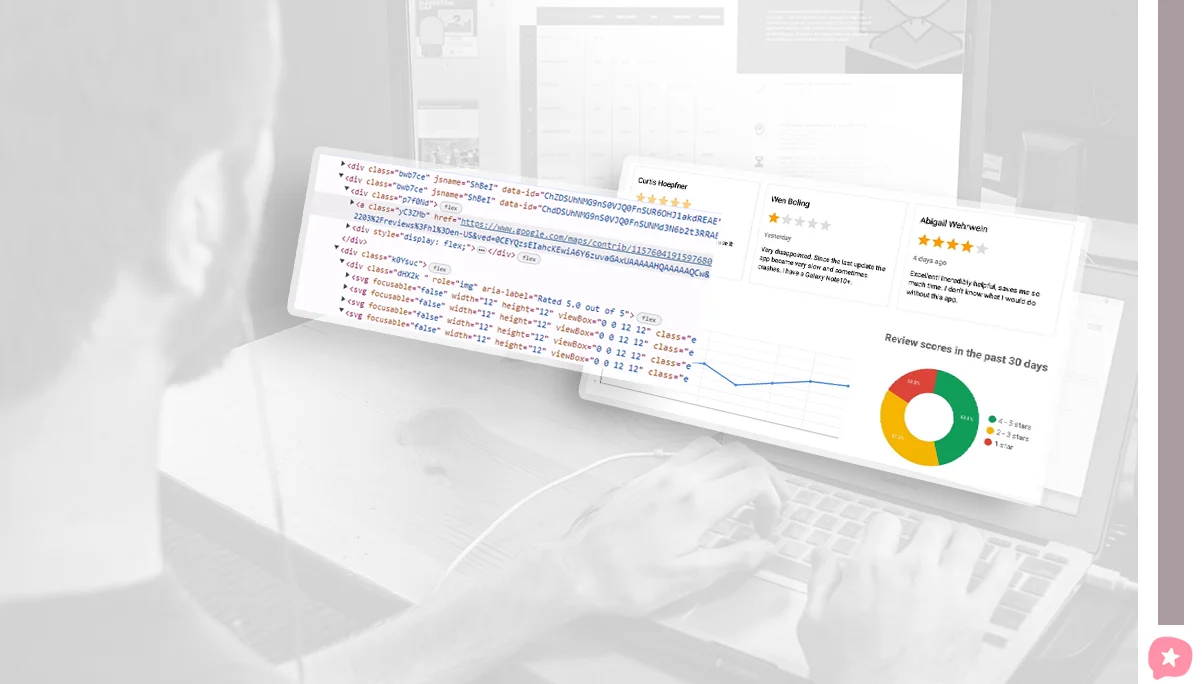
Manual Scraping: Time-consuming but straightforward, manually copy reviews from Google search results or business profiles.
Web Scraping Tools: Automate the process using web scraping tools like BeautifulSoup (Python), Scrapy, or commercial tools such as Octoparse, ParseHub, and WebHarvy. These tools can navigate through Google's pages, extract structured data, and save it in CSV or JSON formats.
APIs: Google offers APIs (Application Programming Interfaces) like the Google Places API for accessing reviews programmatically. This method requires API keys and adherence to usage limits and terms.
Step-by-Step Guide to Scraping Google Customer Reviews
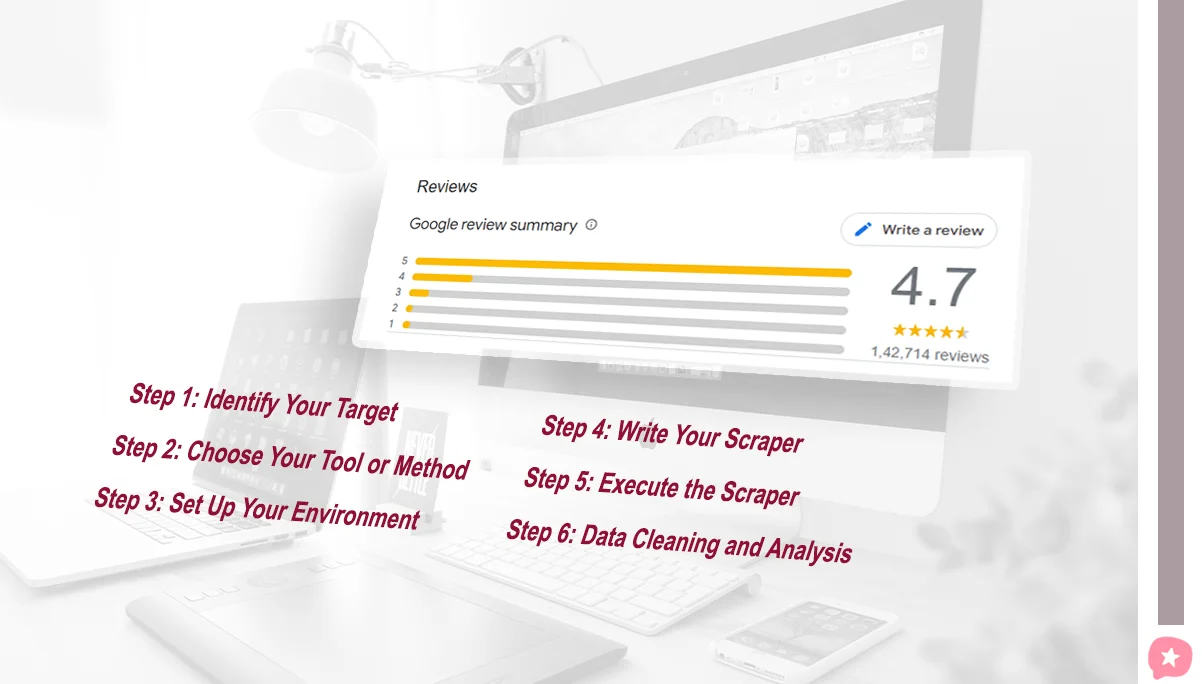
Step 1: Identify Your Target
Determine which Google platform (Google Maps, Google My Business, etc.) and specific businesses or products you want to extract reviews from.
Step 2: Choose Your Tool or Method
Select a suitable web scraping tool or decide whether to use APIs based on your technical skills, budget, and project requirements.
Step 3: Set Up Your Environment
Install necessary libraries if using Python (e.g., BeautifulSoup, requests) or configure your chosen web scraping tool.
Step 4: Write Your Scraper
Develop a scraper that can:
Navigate through search results or business profiles.
Extract review text, rating, date, and other relevant metadata.
Handle pagination to scrape multiple pages of reviews.
Step 5: Execute the Scraper
Run your scraper to collect the desired data. Monitor progress and ensure data is extracted correctly.
Step 6: Data Cleaning and Analysis
Clean scraped data by removing duplicates, formatting text, and handling missing values. Analyze reviews using statistical methods or sentiment analysis tools to derive insights.
Python Code
Here's a basic example of using BeautifulSoup to scrape Google reviews (this is a simplified example and may not work in all cases):
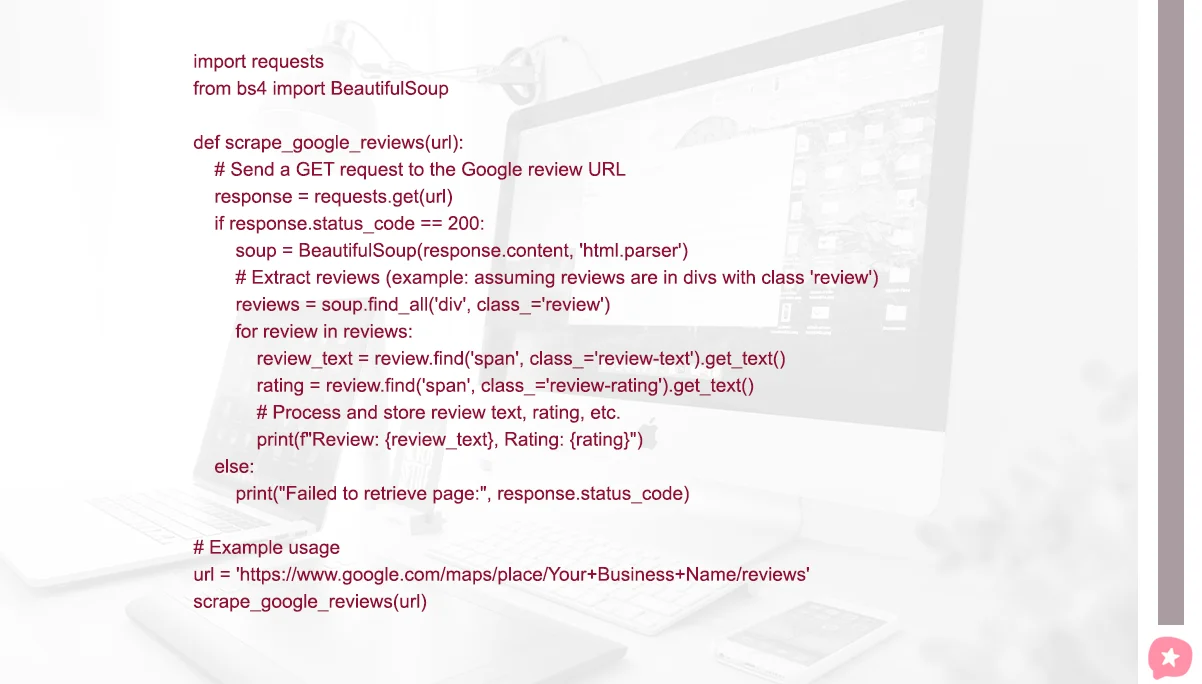
Conclusion
Scraping customer reviews from Google offers invaluable insights that empower businesses like Datazivot with actionable data on consumer sentiment and competitive landscapes. By employing suitable tools like Reviews Scraping API and ethical practices, businesses can harness this data to make informed decisions, enhance customer experiences, and optimize market strategies effectively.
At Datazivot, we understand the significance of leveraging Google customer reviews to stay ahead in your industry. By analyzing these reviews, businesses gain a deeper understanding of customer needs and expectations, identifying strengths to leverage and areas for improvement. This strategic approach not only enhances customer satisfaction but also strengthens brand reputation and loyalty.
Start leveraging Google customer reviews today with Datazivot to unlock a wealth of insights that drive business growth and success. Contact us to discover how we can help you extract and analyze customer reviews effectively, ensuring you stay competitive and responsive to market trends.
Transform your business with actionable insights from Google customer reviews. Contact Datazivot to get started!
